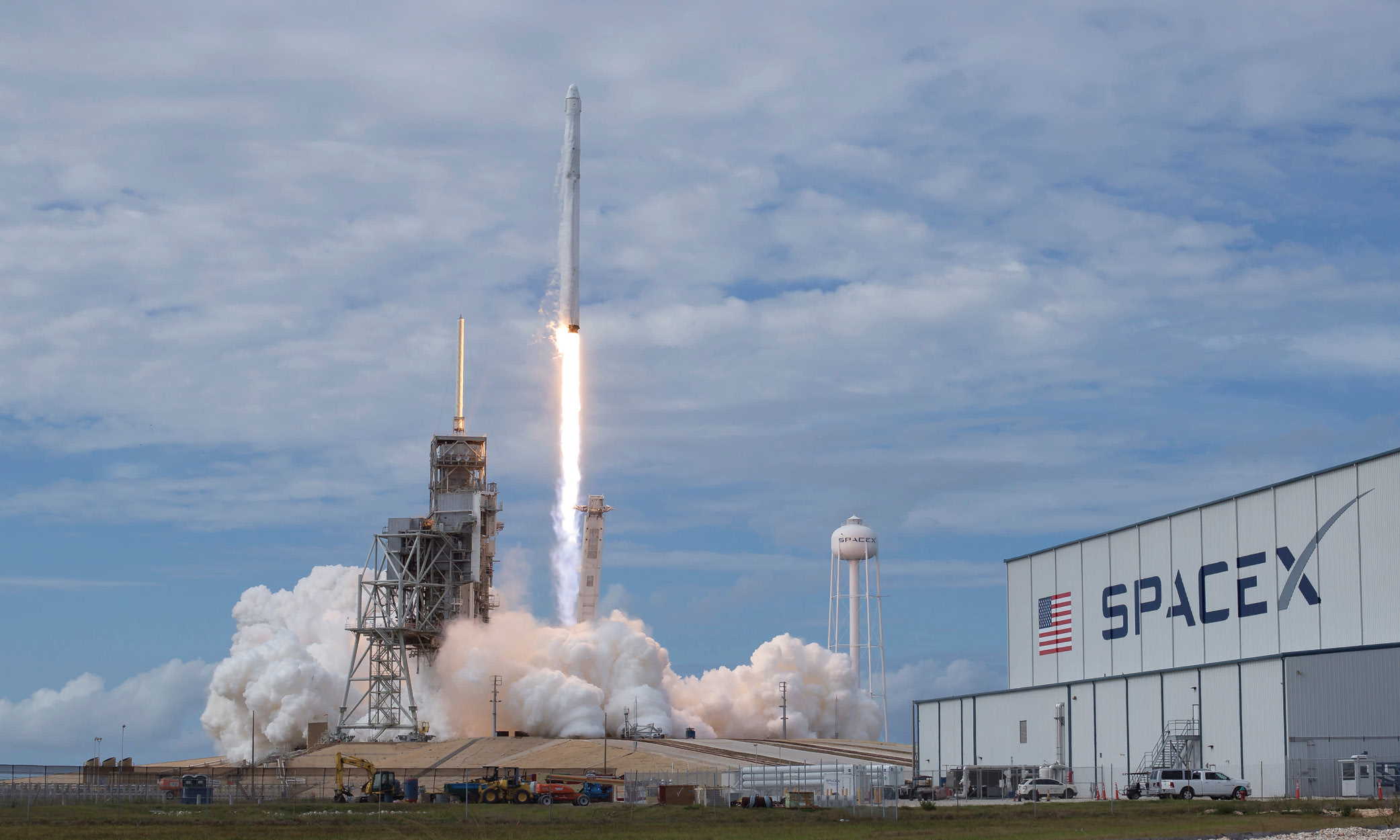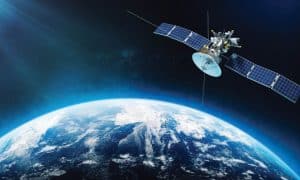Due to low launch costs, frequent revisits, and rapid innovations, private players have been at the vanguard of radically transforming the space sector. But what lies ahead?
Since the start of the Space Race in 1955, outer space has been dominated by governments. Initially driven by national agencies such as NASA, Roscosmos, or ISRO, over time the focus shifted towards major aerospace and defence contractors.
Purely commercial companies were formed mainly to deliver communications from geostationary orbit (GEO). In the last decade, the industry has shifted again towards private investment and start-ups, which is called the “New Space Economy”.
Seeing the fast-paced change, some questions arise: how did this change happen, where is the industry now, and what is the future?
Key Drivers
The New Space Economy kick-started with four major developments: launch rideshare; more affordable satellites; satellite constellations; and VCs investing into space.
Since the beginning of the satellite industry, almost every decision, from engineering, to operations, to financing, has been influenced by the high-cost and infrequent nature of launches.
With expensive launch services, the cost of failure has conventionally been very high. If a satellite failed, it could cost millions of dollars to buy a new launch, scheduled years ahead. This made engineers conservative – if you could not afford to launch again, you had to ensure your satellite could not fail.
The problem here is that it drives up cost, and adds more redundancy than necessary. It also led to engineers often using flight-proven parts – mostly old technology.
Twin Game-Changers
SpaceX’s Falcon 9 substantially reduced launch costs to less than $5000/kg. It also sent satellites to orbit almost on a weekly basis this year. Now, engineers can afford to have the occasional satellite fail – if it did, they could launch again soon.
Satellite engineers can take advantage of this steep price reduction by building cheaper satellites, often made from commercial off-the-shelf automotive parts. These are more likely to fail than heritage components but offer unprecedented high performance.
As a result, satellite manufacturers can build cheaper satellites that are often better than older designs. This led to the launch of low Earth orbit (LEO) constellations with better coverage and revisit rates than older GEO satellites. Frequently replacing old satellites also became possible due to the latest innovations.
With falling costs, frequent improvements, and the adoption of newer technology, Venture Capitalists (VCs) saw a market ripe for disruption. This motivated early investments in SpaceX, Rocket Lab, Spire, and Planet, to name just a few.
Market Ripples

Source: European Space Policy Institute Report 85 – Space Venture Europe 2022
The most successful New Space companies today generate revenue ranging from hundreds of millions to billions of dollars annually, in the case of Space X.
Many of these companies have gone public via de-SPAC, often an easier method, with less scrutiny of financials.
However, a difficulty for these companies is that public market investors have punished them for weaker financials, particularly the fact they are not profitable yet. This has pushed most of these “de-SPAC” companies share price down, despite increasing revenue and large contract wins.
SpaceX has decided to stay private for this reason. Recently leaked data suggests that it hit profitability this quarter, which means it could head towards an IPO.
Also Read: SPAC IN SPACE -Has the Bubble Burst?
Share of the Pie
Most of the largest new space startups fall into one or more of these categories: Launch, Earth Observation, Communications, and Satellite Manufacturing.
Launch has been an early front-runner for private investment and new startups, as a core enabling technology for the industry.
What was once a very stagnant sector, often with national monopolies, now has over 90 start-ups globally developing their own rockets.
The US has the strongest launch start-up ecosystem with SpaceX, Rocket Lab, Firefly, and Blue Origin. Europe has several contenders although none have launched yet: Isar Aerospace and RFA.
India is also drawing on its rich launch heritage in ISRO’s PSLV with Skyroot Aerospace, a new launcher company.
The Earth Observation sector has seen a surge in startups leveraging different technologies to capture geospatial imagery.
Optical imagery is the most advanced commercially with several leading New Space providers that have gone public such as Planet, Satellogic, and Blacksky.
Meanwhile, ICEYE and Capella Space are pioneering efforts in Synthetic Aperture Radar (SAR), providing unique insights irrespective of weather conditions.
These have been frequently deployed in Ukraine for military intelligence and open-source intelligence (OSINT).
Some technologies are only just starting to be deployed by startups, such as hyperspectral imaging by India’s Pixxel, and infrared imaging by SatelliteVu.

The latter are particularly useful for climate change-related monitoring: hyperspectral can be used to detect methane leaks, while infrared can monitor heat signatures in buildings.
Communications, one of the oldest satellite sectors, is increasingly driven by LEO constellations to deliver reduced data latency. SpaceX’s Starlink and the Bharti Airtel backed OneWeb aims to deliver global internet coverage to both consumers and enterprise.
Direct-to-cell technology is an emerging area enabled by changes to the cell phone network interoperability standards 3GPP, which allows satellites to act like cell towers in space.
These changes are poised to revolutionize both IoT devices and conventional mobile communications. Companies like AST and Lynk are at the forefront of broadband technology, whereas Skylo is making waves in the narrowband segment.
In the Hindsight
All of these developments have been better than what was expected 10 years ago. But in Earth Observation there has been less commercial adoption of geospatial data than anticipated by companies and investors.
All of the new EO companies derive more of their revenue from the government than was initially predicted.
There are several possible explanations for this. The government is the biggest user of EO data and may always be. EO data may still be too expensive for commercial applications. Or it’s possible that the industry still does not know how to use EO data effectively.
There are some arguments that because of the limited adoption of geospatial data thus far, the commercial industry has found workarounds to use geospatial data or space-derived data.
From Info to Solutions
The focus now, for next-gen startups and innovative companies, is shifting from merely collecting and delivering space data to building comprehensive products around it. They aim to deliver crucial insights or information to the end customer, often bundled with other data sources. These end-users might not even be aware that space data is involved.
This makes space-derived data accessible and useful to non-specialists, particularly in sectors such as finance and insurance. Many of the founders don’t come from the space sector but instead from those they are selling into, and solving real problems within the industry.
The biggest drive for space data products is coming from climate-related startups. As space provides both a global and local view at the same time, it is ideally suited for climate applications. In addition, the ability to independently verify, makes it perfect for monitoring applications. There are a wide variety of potential applications.
Startups are starting to build wildfire and natural disaster insurance products using improved risk models that leverage space data. Space-derived data is also being used by several startups for carbon credit verification, proving whether deforestation has been prevented, or how much carbon has been sequestered in a project.

Limitations of Space Data?
Many have argued that space data has been adopted less than expected because it’s only adding some additional information to existing data streams, which are often offered by governments at low-cost.
Coupled with this fact, it’s easy to see how this could limit utility in data science models. But in regions where we don’t have many existing data streams, space geospatial data can provide a lot of information in a single stream, removing the need to implement different tools or measures.
In these cases, space can be very useful, such as for insurers or hedge funds who can easily access validated information in developed markets but have much more limited information in developing markets. Space data can provide information on productivity or examine whether a factory is working at full capacity.
Reaping Mass Benefits
Space as a sector has been fundamentally disrupted by technology evolution and the first wave of startups. By developing the core infrastructure of the New Space Economy, these companies have reshaped how we launch, build, and use satellites, generating real returns for investors in the process.
With increasing funding, the next wave of startups will focus on bringing space data to the masses. Their space data products could make the use of geospatial data ubiquitous.
Also Read: Geospatial Infra Enabling Space Business









